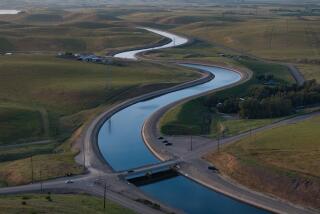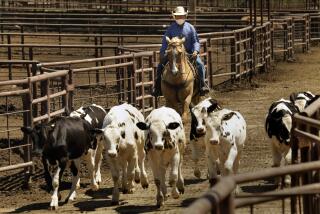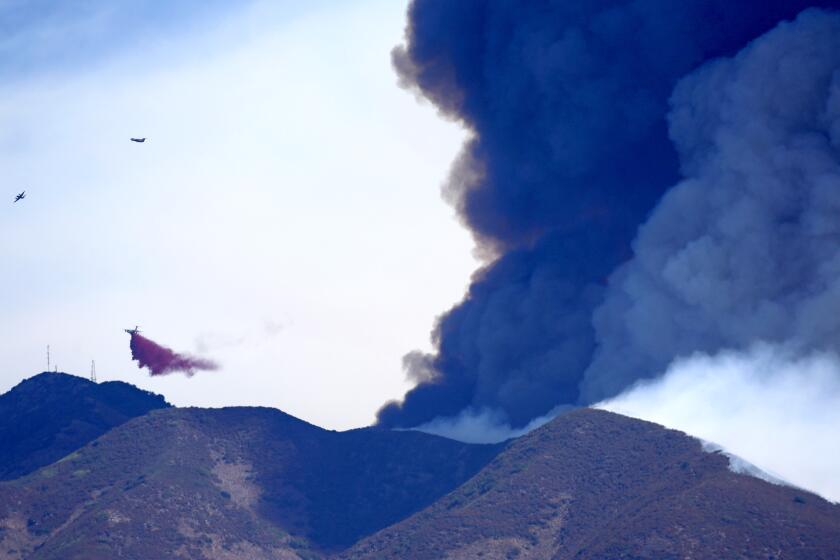The Colorado River delta blues
River deltas are among the most biologically productive ecosystems on Earth, and for millions of years the delta of the Colorado River was no exception. After a 1,450-mile journey from its headwaters in the Rocky Mountains south into Mexico, the Colorado sustained verdant marshes teeming with life before emptying into the aquatic Eden of the upper Gulf of California.
In 1922, the great naturalist Aldo Leopold canoed through the delta, which he described as “a milk and honey wilderness” and a land of “a hundred green lagoons.” It was home back then to deer, quail, raccoon, bobcat, jaguar and vast flocks of waterfowl, and its 2-million-acre expanse was a crucial stopover on the Pacific flyway, providing respite and feeding grounds for millions of migratory birds as they journeyed across the western Americas.
Fisheries in the upper Gulf of California depended on the Colorado delta too. The totoaba, a relative of white sea bass that could grow to more than 250 pounds, would migrate from the upper gulf to spawn in the delta’s brackish estuaries. For at least 1,000 years, the indigenous Cucapá, the “people of the river,” fished and farmed in the delta, keying their lives to the river’s ebb and flow.
Today, the Colorado delta is a shadow of its former self. Once one of the planet’s most vital aquatic ecosystems, it is now one of the most threatened. A low-altitude flight over the region reveals a desiccated landscape of salt flats and cracked earth. There is little sign of a living river because the river is gone; in all but the wettest years, it disappears into the desert sands a short distance south of the border.
The decisions that led to the delta’s decline date, ironically, to 1922, the same year Leopold canoed through the marshy wilderness. In late November of that year, then-Secretary of Commerce Herbert Hoover traveled to Bishop’s Lodge outside of Santa Fe, N.M., to broker an agreement divvying up the liquid lifeline of the Southwest.
All seven U.S. states in the basin were represented, but two voices were missing. One was that of Mexico. The other was the river itself.
A binational treaty signed in 1944 at least partially corrected the first of those omissions. It allotted 10% of the Colorado’s flow to Mexico and the other 90% to the United States. How to keep the river healthy didn’t figure in the discussion.
Meanwhile, engineers were busy building the dams and canals needed to deliver water to the states that had signed the agreement. Hoover Dam, completed in 1935, created Lake Mead, the biggest man-made reservoir in the United States. Davis, Parker, Imperial and half a dozen other dams followed. The All American Canal, the Colorado River Aqueduct, the Central Arizona Project and other diversion schemes began delivering Colorado River water to the burgeoning cities and farmlands throughout the basin.
Today, the Colorado supports about 30 million people and 1 million acres of irrigated farmland. It pours its flow out to Los Angeles and San Diego, Phoenix and Tucson, Las Vegas, Denver and Mexicali. Its waters make the desert burst with tomatoes, melons, alfalfa and cotton.
But with no water reserved for the river itself, the Colorado dries up long before it reaches the sea, and much of its delta is at death’s door. Its biological glory now lives on largely in the 40,000-acre Ciénega de Santa Clara, an accidental but crucial wetland created and sustained by agricultural drainage sent south from cotton fields in Arizona.
Besides providing crucial habitat for the endangered Yuma clapper rail and desert pupfish, the Ciénega demonstrates the delta’s profound resilience: Add water and it bounces back.
The United States and Mexico now have the best opportunity in more than half a century to bring life and health back to critical portions of the Colorado River delta.
A recent confluence of events has opened new modes of binational cooperation and creative thinking on how to better manage the river so as to give greater flexibility and benefits to all parties. And this time, the river may be among them.
One of the ideas under discussion is a binational commitment to deliver a small volume of flow — less than 1% of the river’s total — to the delta each year. Through investments in efficiency improvements and smarter water management, such flows could revitalize the delta with no sacrifice of benefits to current water users. As the two countries discuss ways to better manage the Colorado, they should commit to giving a little flow back to the river that does so much for us.
A long-standing partnership of U.S. and Mexican scientists has laid out the priorities for the delta’s restoration. Their work shows that the volume of water under discussion, while relatively small, could do a great deal of ecological good.
This is an opportunity not to be missed. Imagine the legacy for this and future generations of revitalizing one of the greatest ecosystems on the planet. And imagine the joy of a river allowed, once again, to run to the sea.
Sandra Postel is Freshwater Fellow of the National Geographic Society and lead water expert for the Society’s Freshwater Initiative. She is the author of several books, including the award-winning “Last Oasis.”
More to Read
A cure for the common opinion
Get thought-provoking perspectives with our weekly newsletter.
You may occasionally receive promotional content from the Los Angeles Times.










